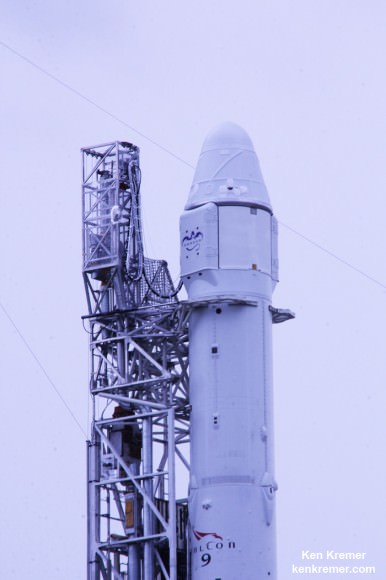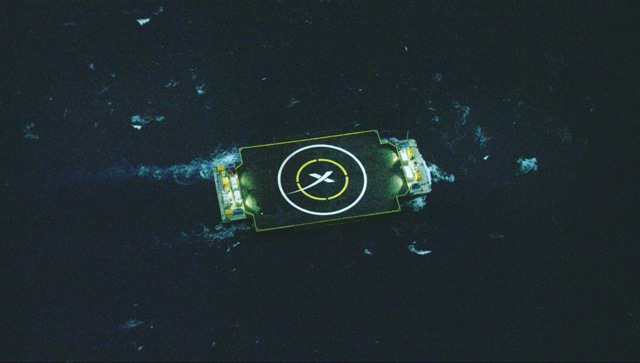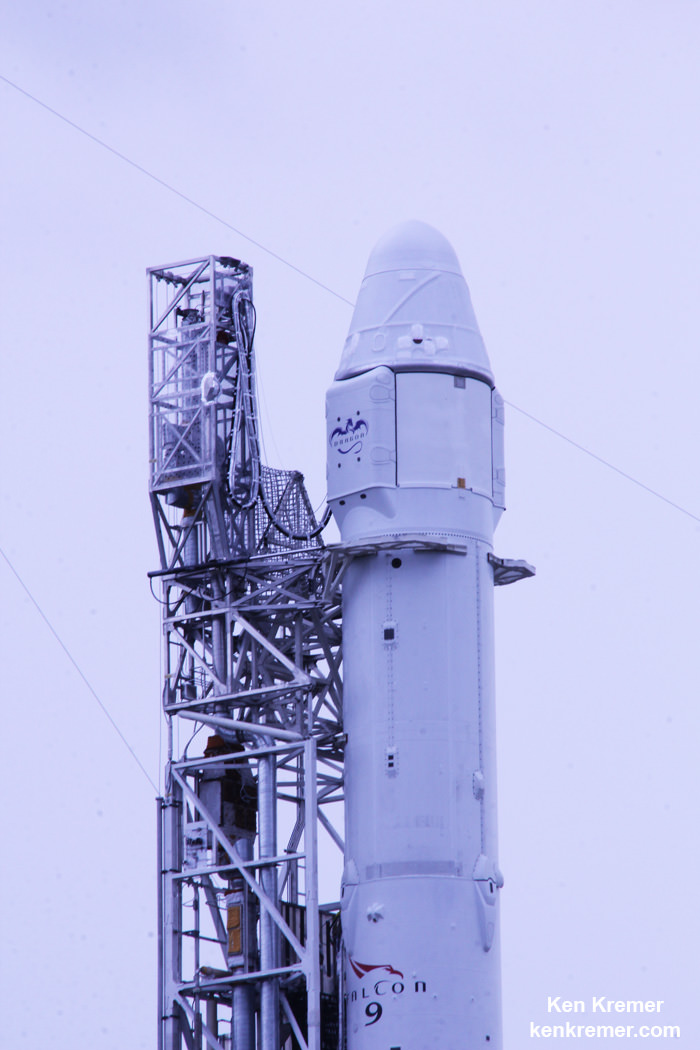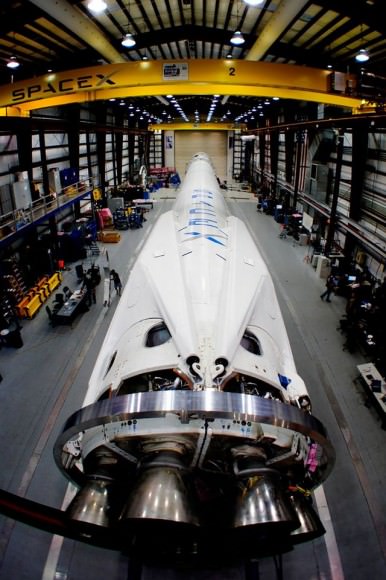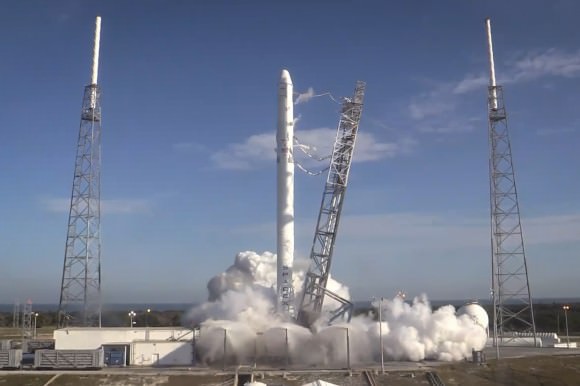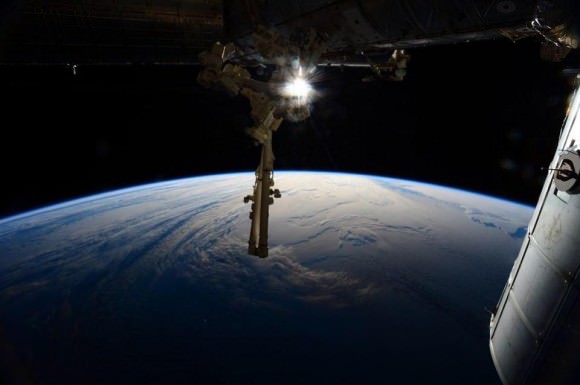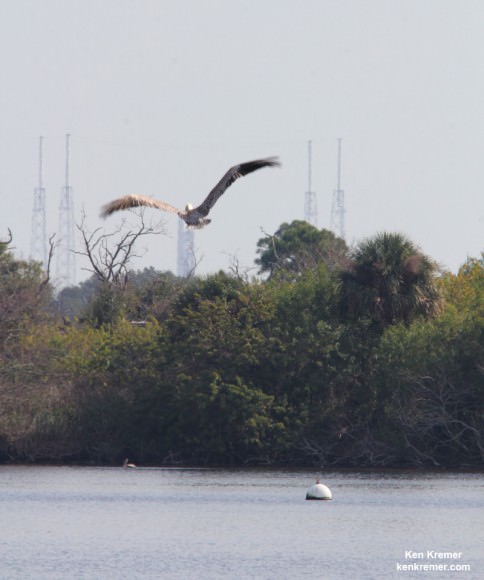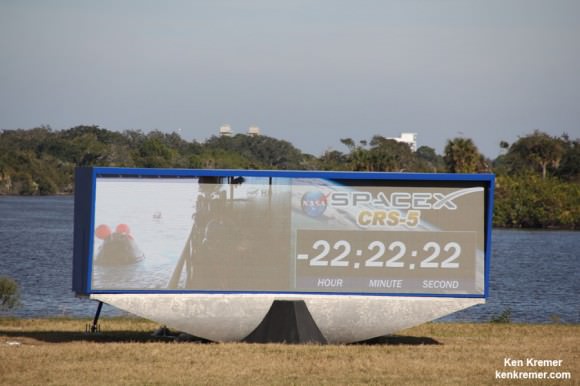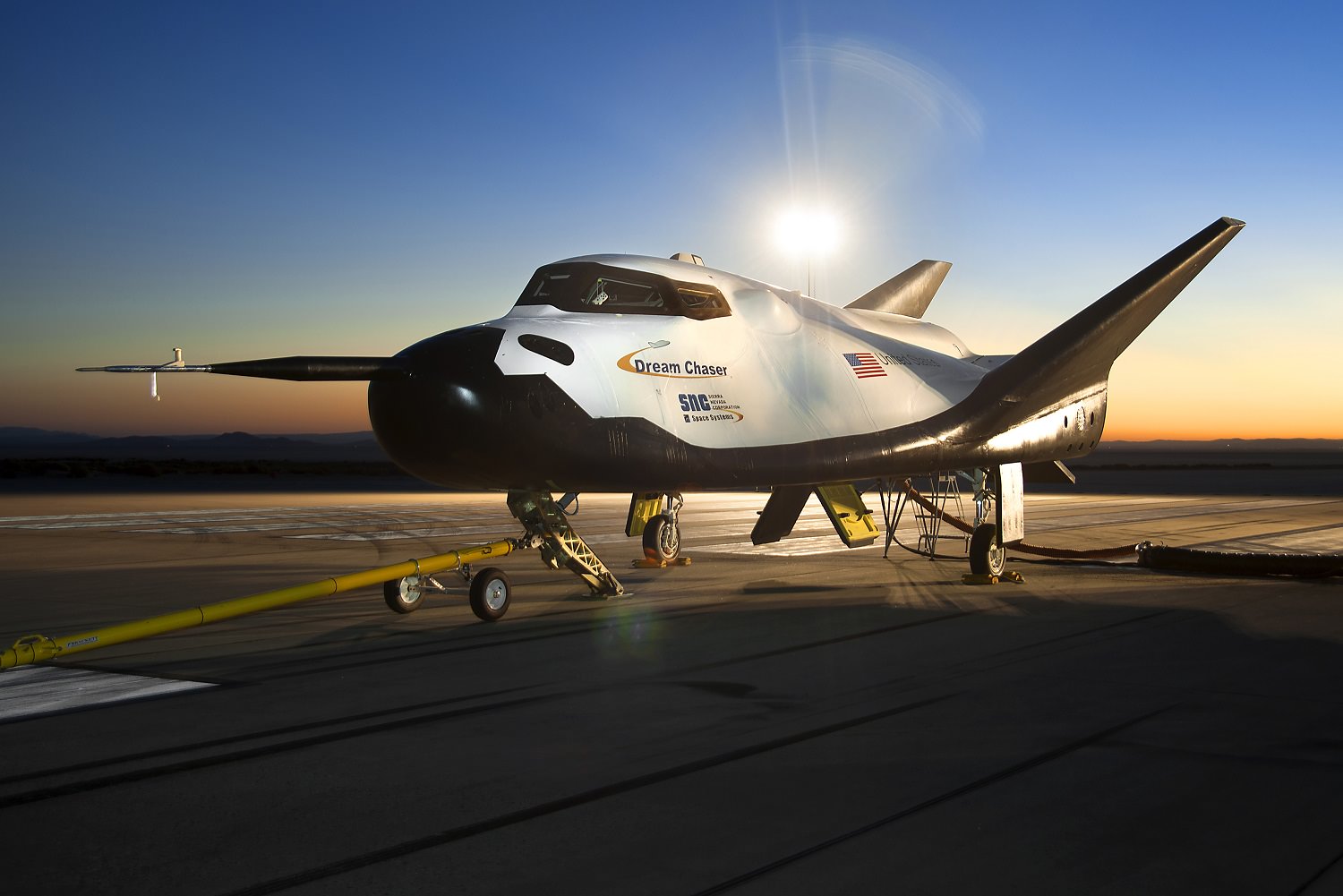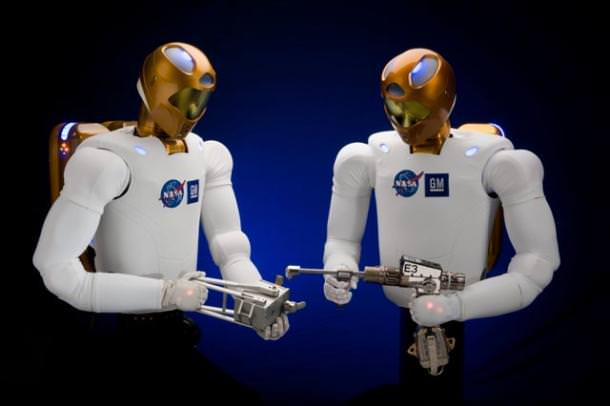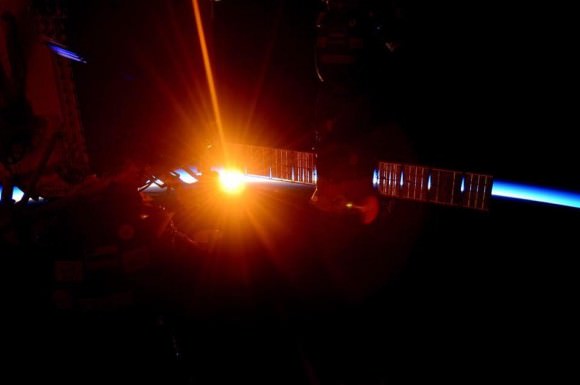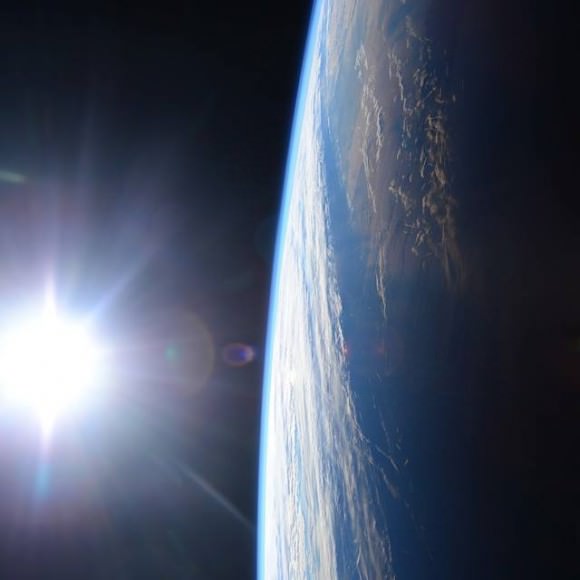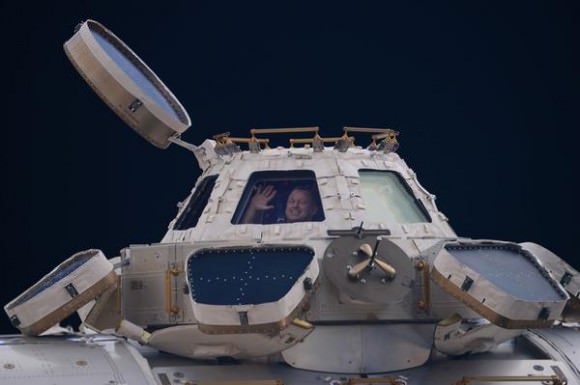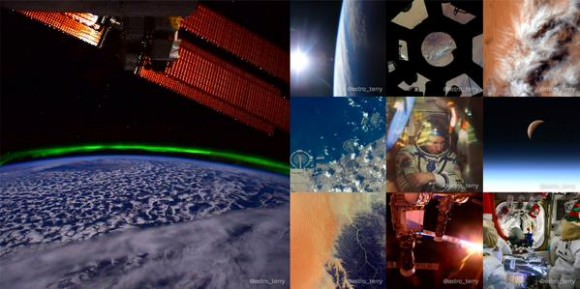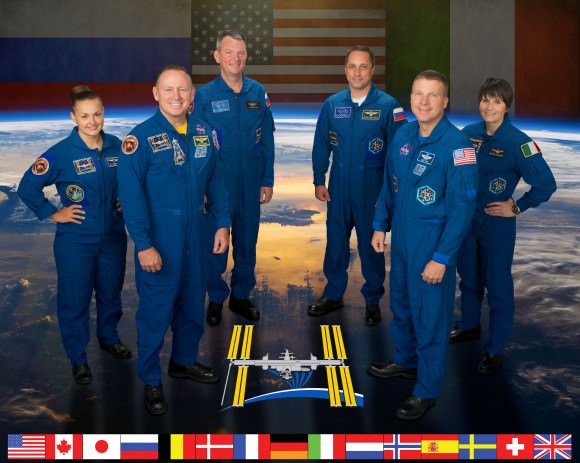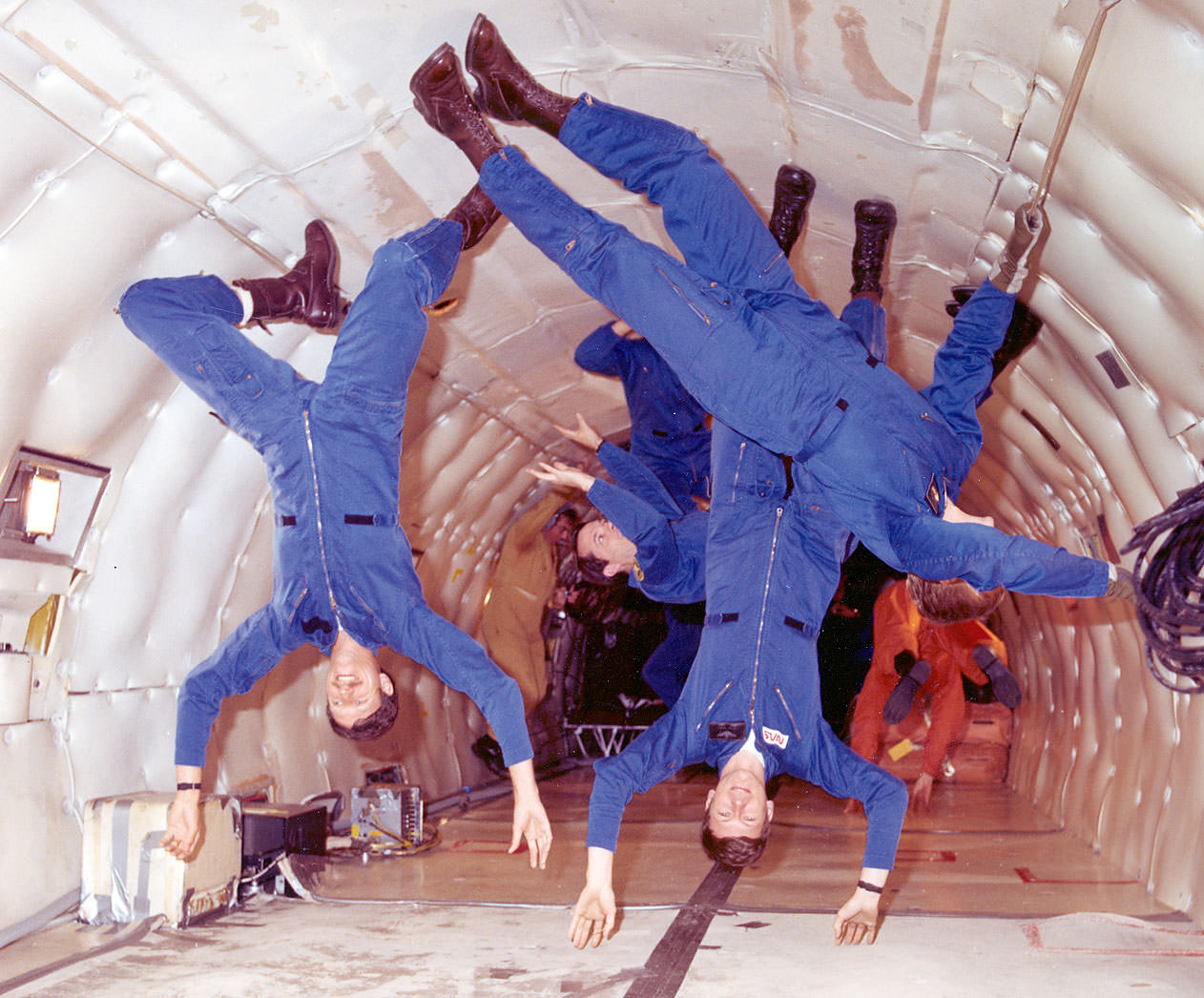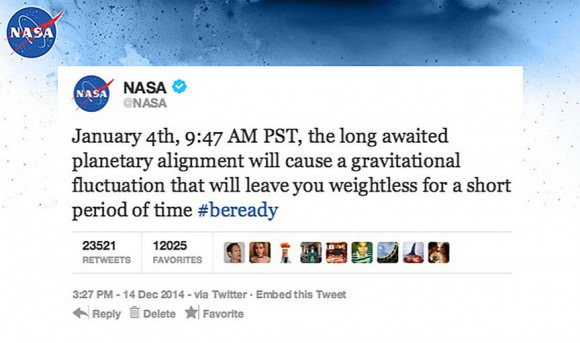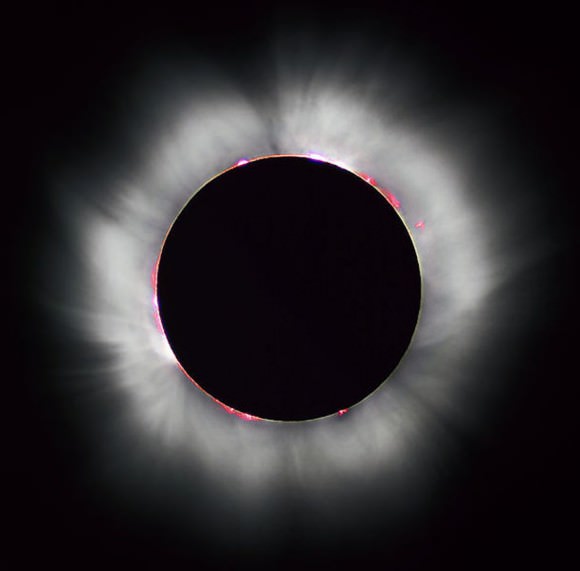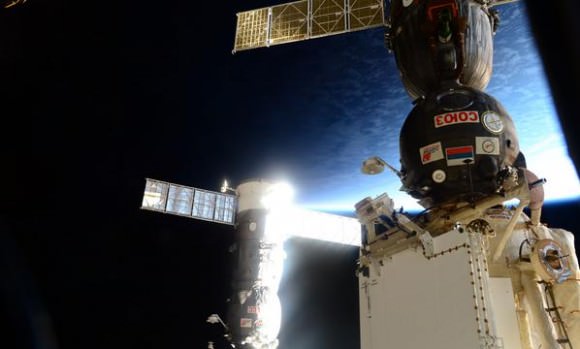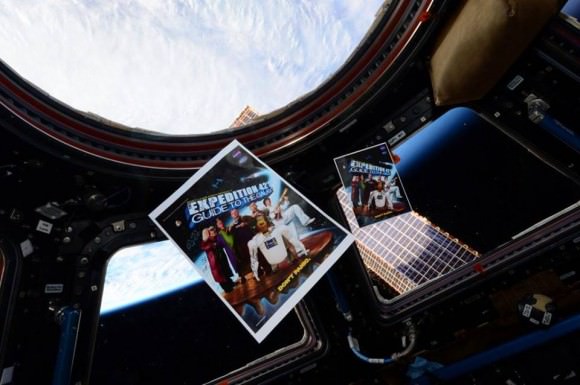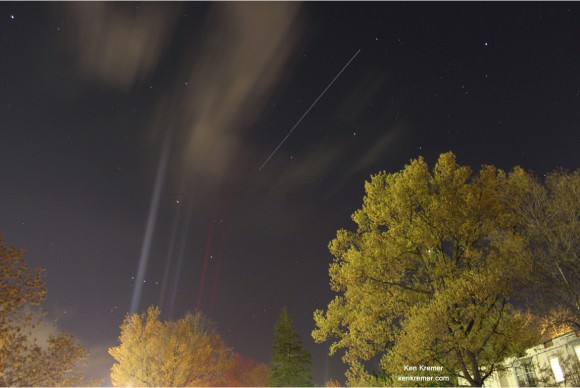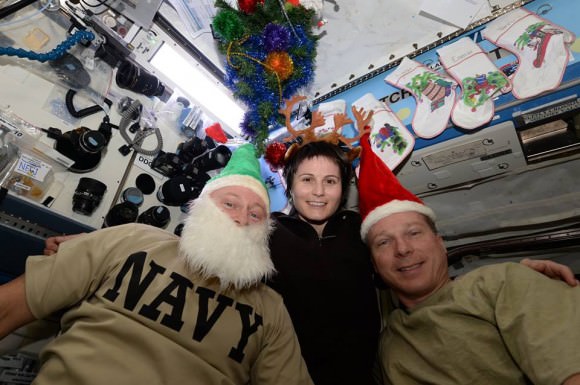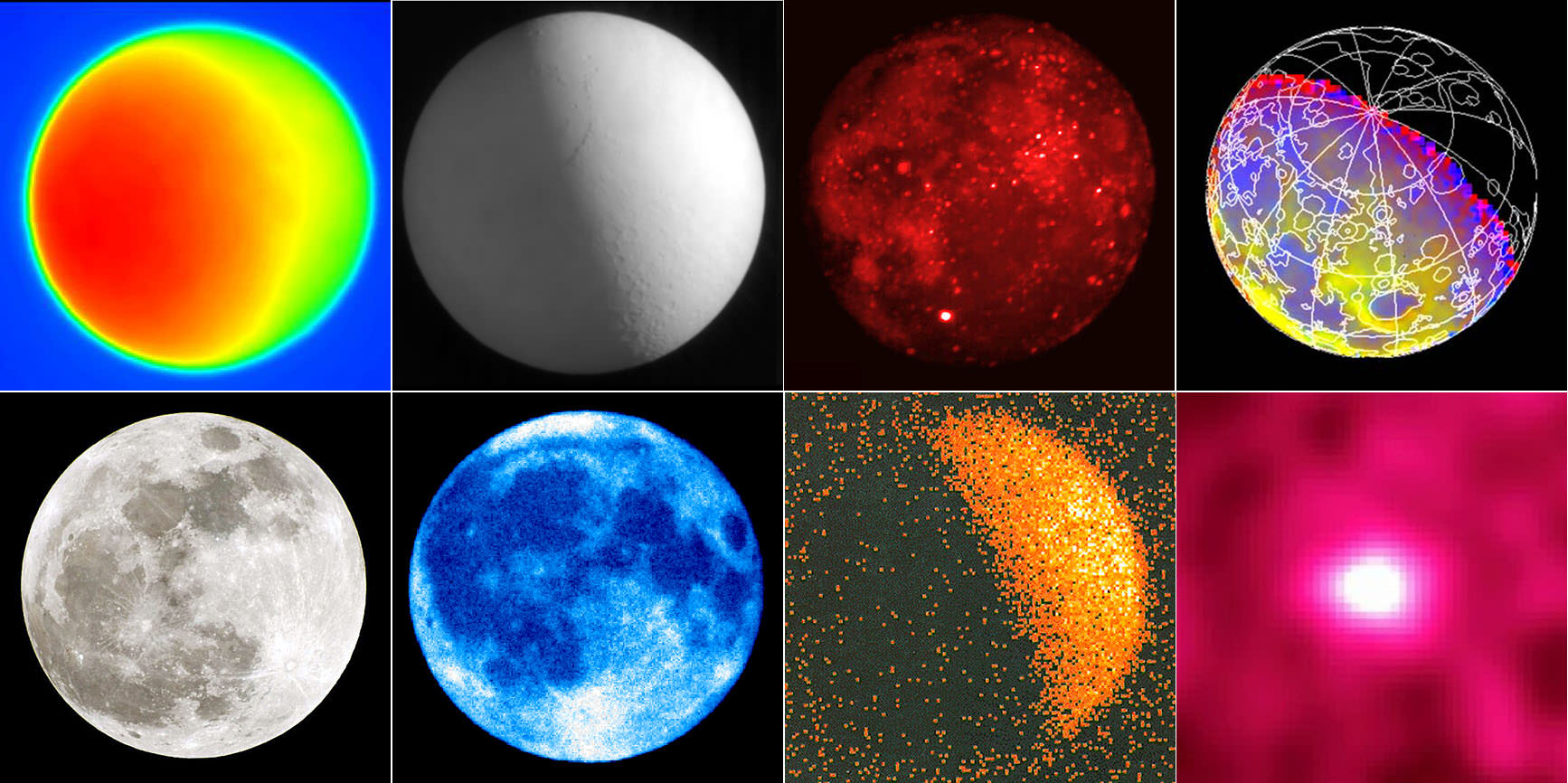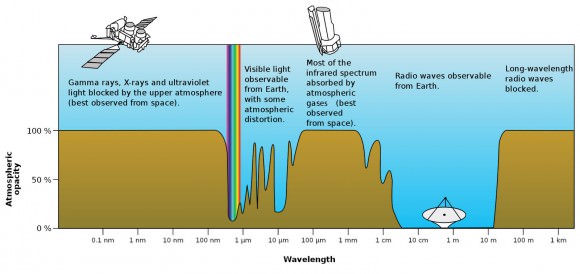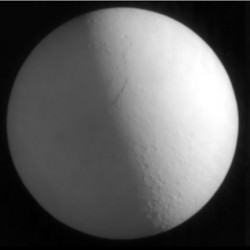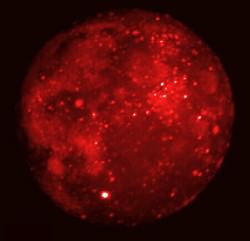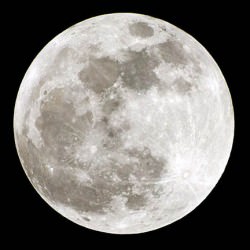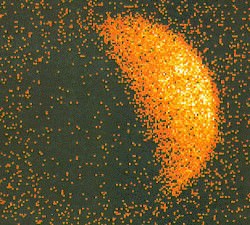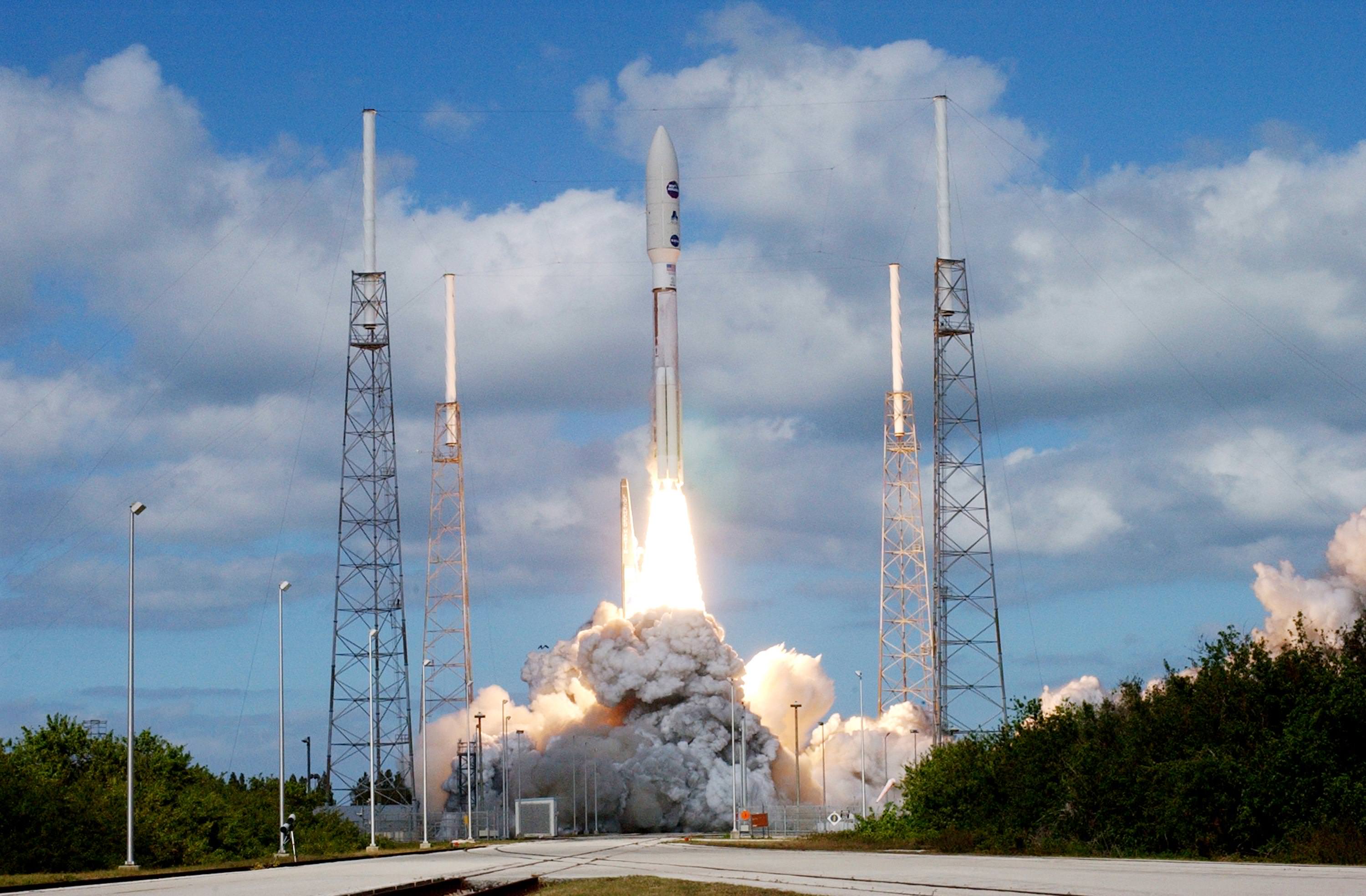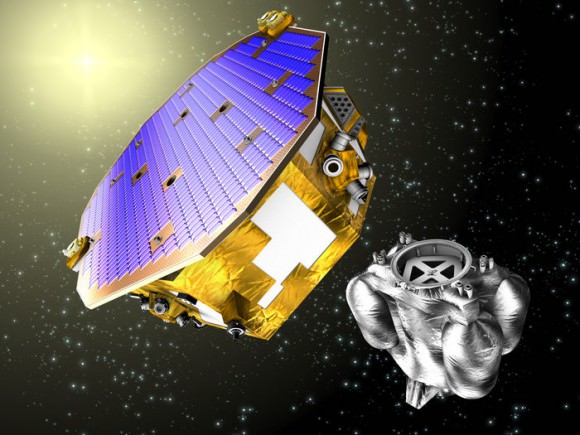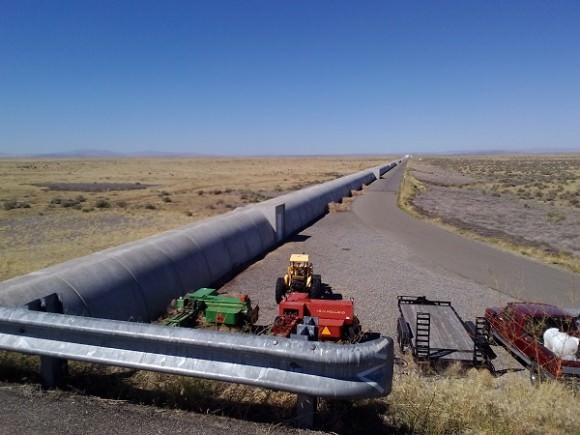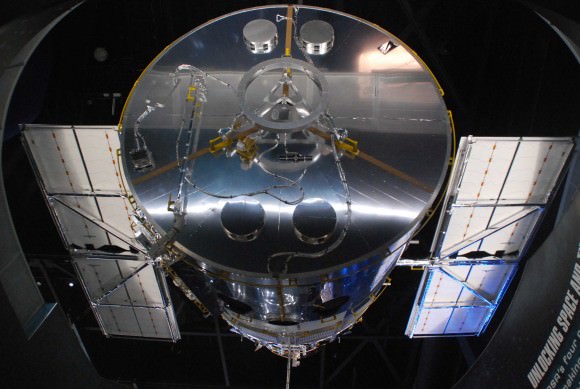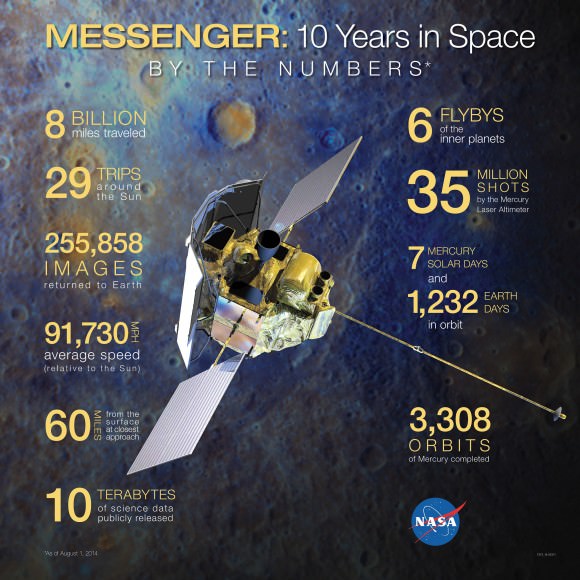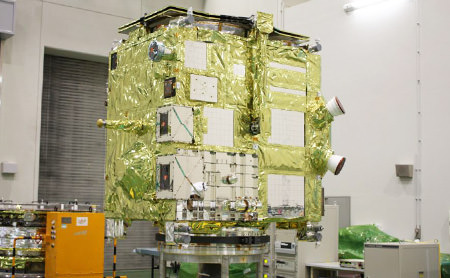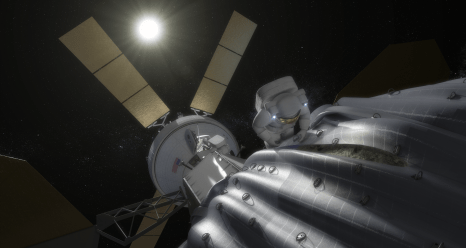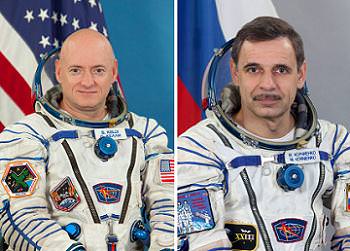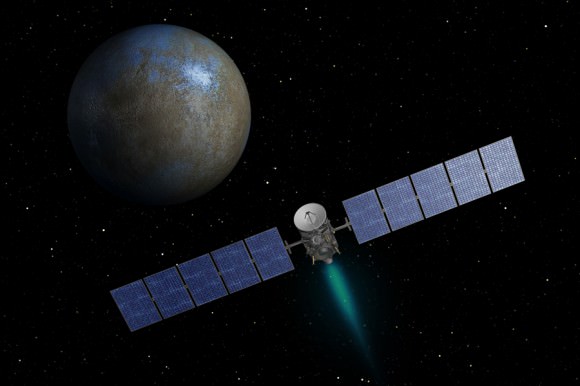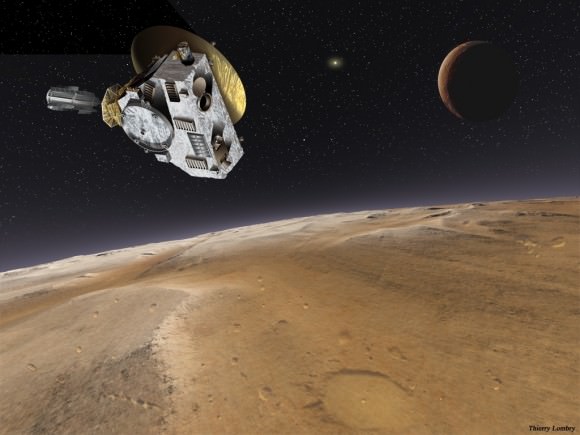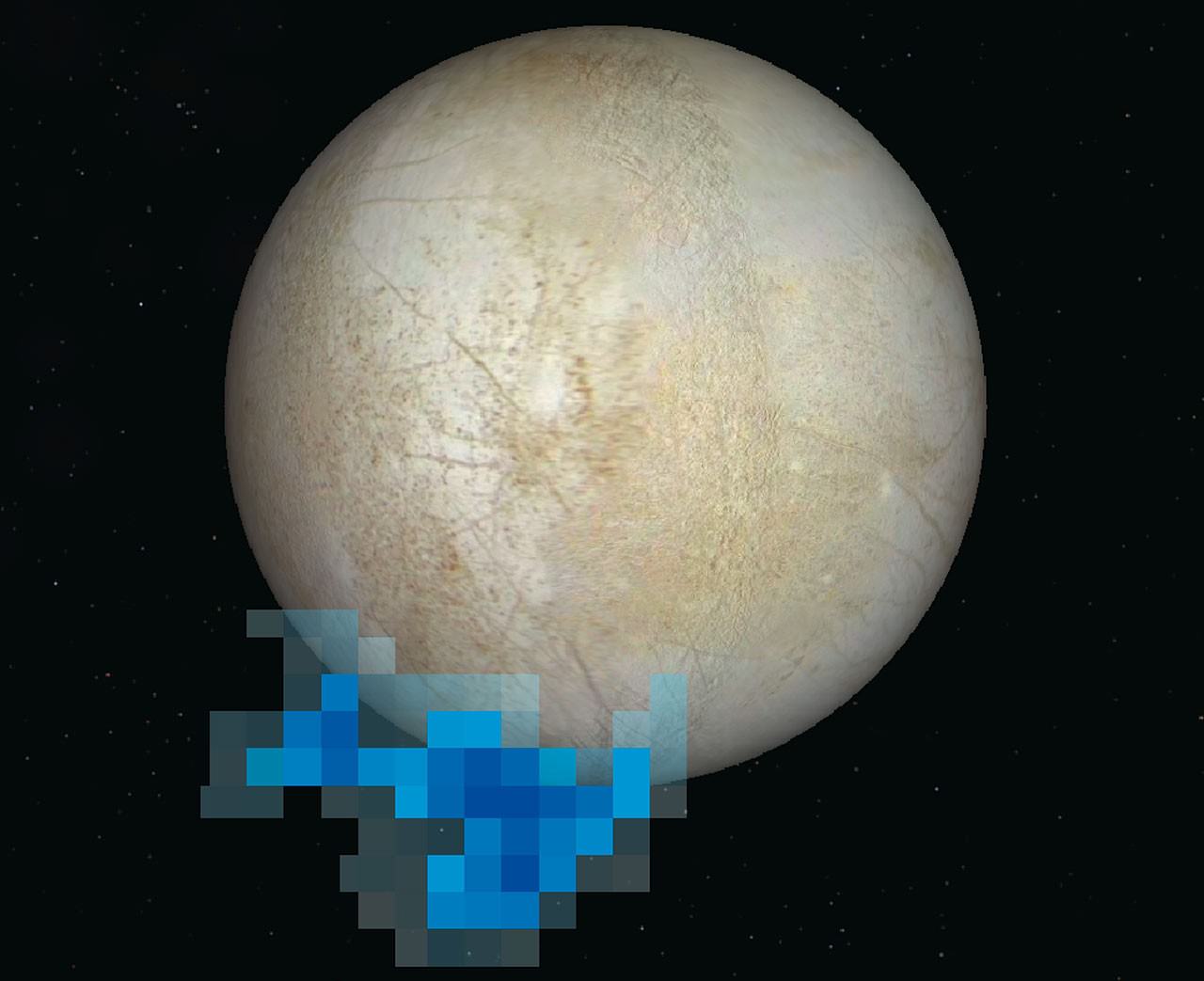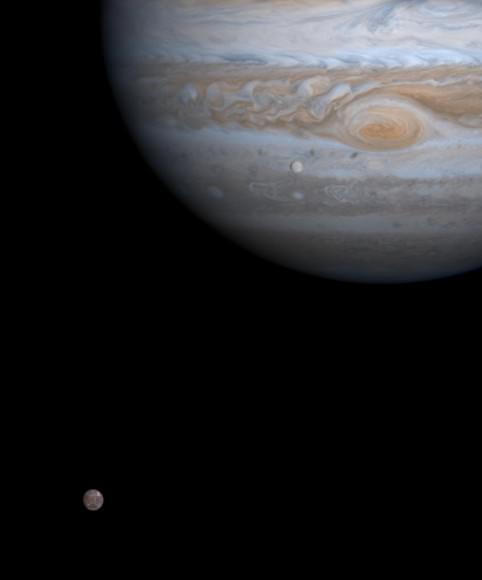Aiming to one day radically change the future of the rocket business, SpaceX CEO Elon Musk has a bold vision unlike any other in a historic attempt to recover and reuse rockets set for Jan. 6 with the goal of dramatically reducing the enormous costs of launching anything into space.
Towards the bold vision of rocket reusability, SpaceX dispatched the “autonomous spaceport drone ship” sailing at sea towards a point where Musk hopes it will serve as an ocean going landing platform for the first stage of his firm’s Falcon 9 rocket after it concludes its launch phase to the International Space Station (ISS).
“Drone spaceport ship heads to its hold position in the Atlantic to prepare for a rocket landing,” tweeted Musk today (Jan. 5) along with a photo of the drone ship underway (see above).
The history making and daring experimental landing is planned to take place in connection with the Tuesday, Jan. 6, liftoff of the Falcon 9 booster and Dragon cargo freighter bound for the ISS on a critical resupply mission for NASA.
No one has ever tried such a landing attempt before in the ocean says SpaceX. The company has conducted numerous successful soft landing tests on land. And several soft touchdowns on the ocean’s surface. But never before on a barge in the ocean.
The “autonomous spaceport drone ship” departed the port of Jacksonville, FL, on Saturday, heading to a point somewhere around 200 to 250 miles or so off the US East coast in a northeasterly direction coinciding with the flight path of the rocket.
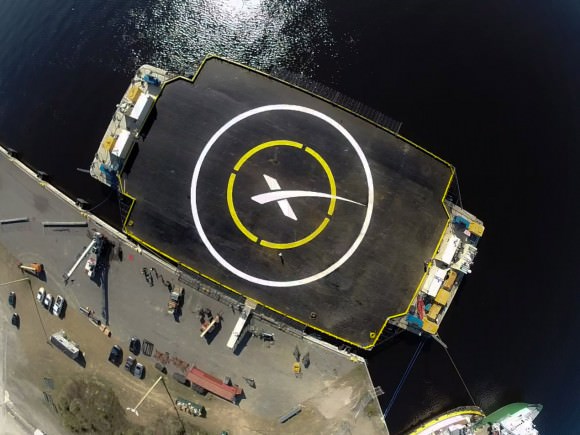
The SpaceX Dragon CRS-5 mission is slated to blast off at 6:20 am EST, Tuesday, Jan. 6, 2015, atop the SpaceX Falcon 9 rocket from Space Launch Complex 40 at Cape Canaveral Air Force Station in Florida.
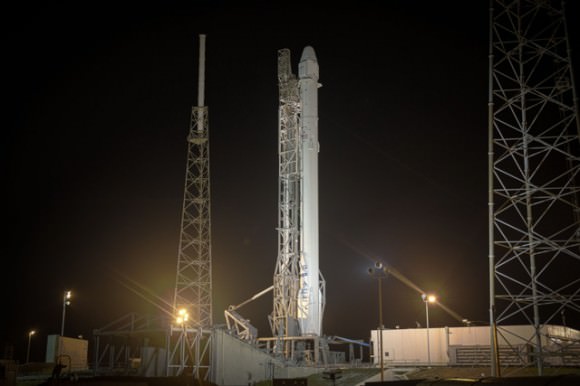
The absolute overriding goal of the mission is to safely deliver NASA’s contracted payload to the ISS, emphasized Hans Koenigsmann, VP of Mission Assurance, SpaceX, at a media briefing today (Jan. 5) at the Kennedy Space Center. Landing on the off shore barge is just a secondary objective of SpaceX, not NASA, he repeated several times.
The Dragon CRS-5 spacecraft is loaded with over 5108 pounds (2317 kg) of scientific experiments, technology demonstrations, crew supplies, spare parts, food, water, clothing, and assorted research gear for the six person crew serving aboard the ISS.
Koenigsmann estimated the odds of success at the landing attempt at about 50% at best according to an estimate from Musk himself.
“It’s an experiment. There’s a certain likelihood that this will not work out right, that something will go wrong.”
The two stage Falcon 9 and Dragon stands 207.8 feet (63.3 meters) tall and is 12 feet in diameter. The first stage is powered by nine Merlin 1D engines that generate 1.3 million pounds of thrust at sea level and rises to 1.5 million pounds of thrust as the Falcon 9 climbs out of the atmosphere, according to a SpaceX fact sheet.
The first stage Merlins will fire for three minutes until the planned engine shutdown and main engine cutoff known as MECO, said Koenigsmann.
The rocket will be in space at an altitude of over 100 miles zooming upwards at 1300 m/s (nearly 1 mi/s).
Then, a single Merlin 1D will be commanded to re-fire for three separate times to stabilize and lower the rocket during the barge landing attempt.
Four hypersonic grid fins had been added to the first stage and placed in an X-wing configuration. They will be deployed only during the reentry attempt and will be used to roll, pitch, and yaw the rocket in concert with gamboling of the engines.
It will take about nine minutes from launch until the first stage reaches the barge, said Koenigsmann. That’s about the same time it takes for Dragon to reach orbit.
He added that, depending on the internet connectivity, SpaceX may or may not know the outcome in real time.
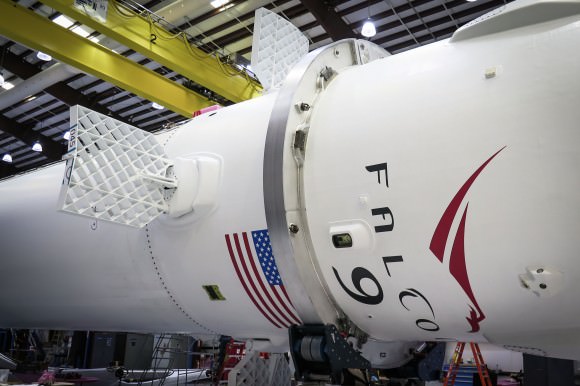
Here’s a description from SpaceX:
“To help stabilize the stage and to reduce its speed, SpaceX relights the engines for a series of three burns. The first burn—the boostback burn—adjusts the impact point of the vehicle and is followed by the supersonic retro propulsion burn that, along with the drag of the atmosphere, slows the vehicle’s speed from 1300 m/s to about 250 m/s. The final burn is the landing burn, during which the legs deploy and the vehicle’s speed is further.”
“To complicate matters further, the landing site is limited in size and not entirely stationary. The autonomous spaceport drone ship is 300 by 100 feet, with wings that extend its width to 170 feet. While that may sound huge at first, to a Falcon 9 first stage coming from space, it seems very small. The legspan of the Falcon 9 first stage is about 70 feet and while the ship is equipped with powerful thrusters to help it stay in place, it is not actually anchored, so finding the bullseye becomes particularly tricky. During previous attempts, we could only expect a landing accuracy of within 10km. For this attempt, we’re targeting a landing accuracy of within 10 meters.”

CRS-5 marks the company’s fifth resupply mission to the ISS under a $1.6 Billion contract with NASA to deliver 20,000 kg (44,000 pounds) of cargo to the station during a dozen Dragon cargo spacecraft flights through 2016 under NASA’s Commercial Resupply Services (CRS) contract.
The cargo delivery is the entire point of the CRS-5 mission.
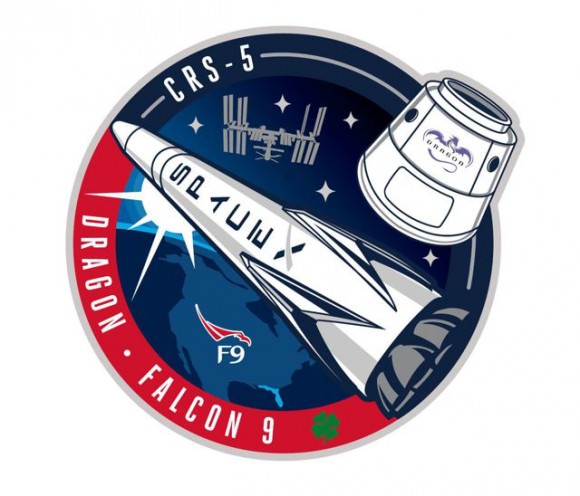
The weather odds have improved to 70% GO from 60% GO reported Major Perry Sweat, 45th Weather Squadron rep, USAF, at the briefing today at the Kennedy Space Center.
Following the catastrophic failure of the Orbital Sciences Antares rocket and Cygnus cargo freighter on Oct. 28 from NASA’s Wallops Flight Facility in Virginia, Antares launches are on hold.
Therefore the US supply train to the ISS is now wholly dependent on SpaceX.
NASA Television live launch coverage begins at 5 a.m. EST on Jan. 6 at: http://www.nasa.gov/multimedia/nasatv/
SpaceX also will webcast the launch at: http://www.spacex.com/webcast/
Stay tuned here for Ken’s continuing Earth and planetary science and human spaceflight news.
